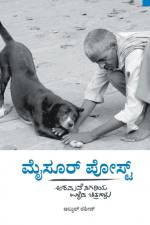- Guide Book
av Abdul Rasheed
157
Senegal has a rich history dating back to ancient times. Paleolithic and Neolithic axes and arrows have been found near Dakar, and stone circles, as well as copper and iron objects, have been found in central Senegal.The stone circles, thought to date from the 3rd century BCE to the 16th century CE, were designated a UNESCO World Heritage site in 2006.The Fulani and Tukulor occupied the lower Sénégal River valley in the 11th century. The name Senegal appears to be derived from that of the Zenaga Berbers of Mauritania and northern Senegal.About 1040, Zenaga Berbers established a Muslim ribāṭ (fortified religious retreat), perhaps on an island in the river; this became the base for the Almoravids, who converted the Tukulor, conquered Morocco, and crossed into Spain.The Almoravid attacks on the Soninke empire of Ghana contributed to the empire's eventual decline. Between 1150 and 1350 the legendary leader Njajan Njay founded the Jolof kingdom, which in the 16th century split into the competing Wolof states of Walo, Kajor, Baol, Sine, and Salum.Islamic influence spread throughout the region in variable strength; it gained new impetus in the late 17th century, and after 1776 Tukulor Muslims established a theocratic confederacy in Fouta. Portuguese navigators reached Cape Verde about 1444; they established trading factories at the mouth of the Sénégal, on Gorée Island, at Rufisque, and along the coast to the south. In the 17th century their power was superseded by that of the Dutch and then the French.The French period Gorée Island, Senegal The stairways of the historical slave house on Gorée Island near Dakar, Senegal. A French factory at the mouth of the Sénégal River was rebuilt in 1659 at N'Dar, an island in the river that became the town of Saint-Louis, and in 1677 France took over Gorée from the Dutch. These two communities became bases for French trading companies that bought slaves, gold, and gum arabic in the region and became homes for free Christian Africans and Eurafricans.After two periods of British occupation, Saint-Louis and Gorée were returned to France in 1816. When attempts to grow cotton near Saint-Louis proved unprofitable, trade for gum in the Sénégal valley was substituted. In 1848 the marginal colonial economy was further disrupted when the Second Republic outlawed slavery on French soil.




